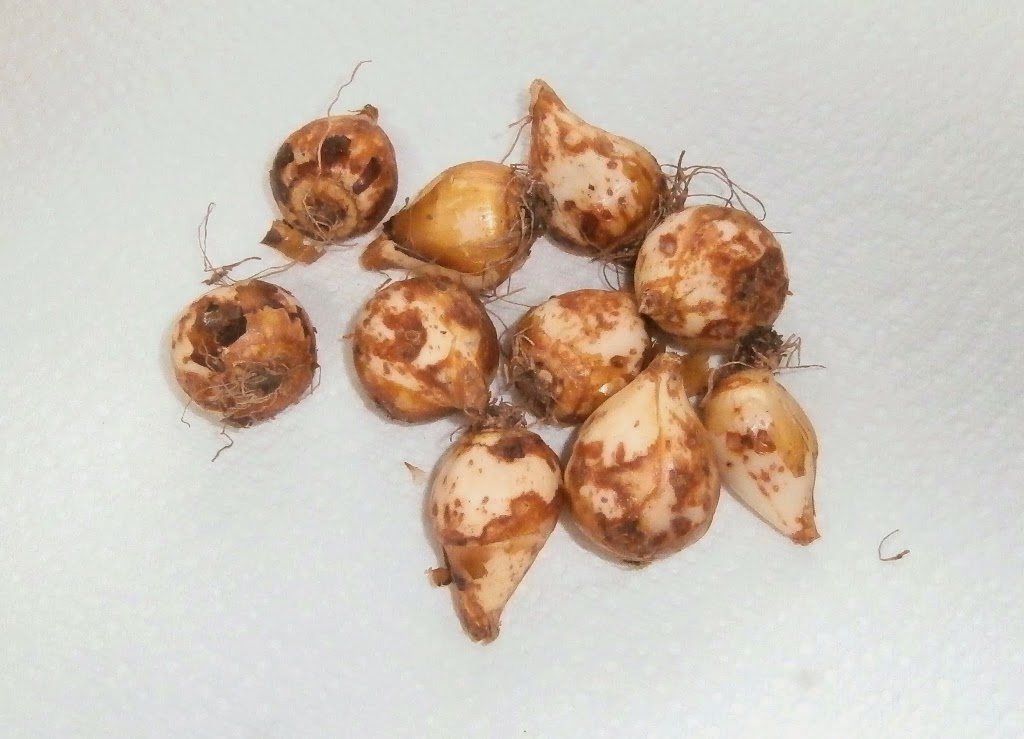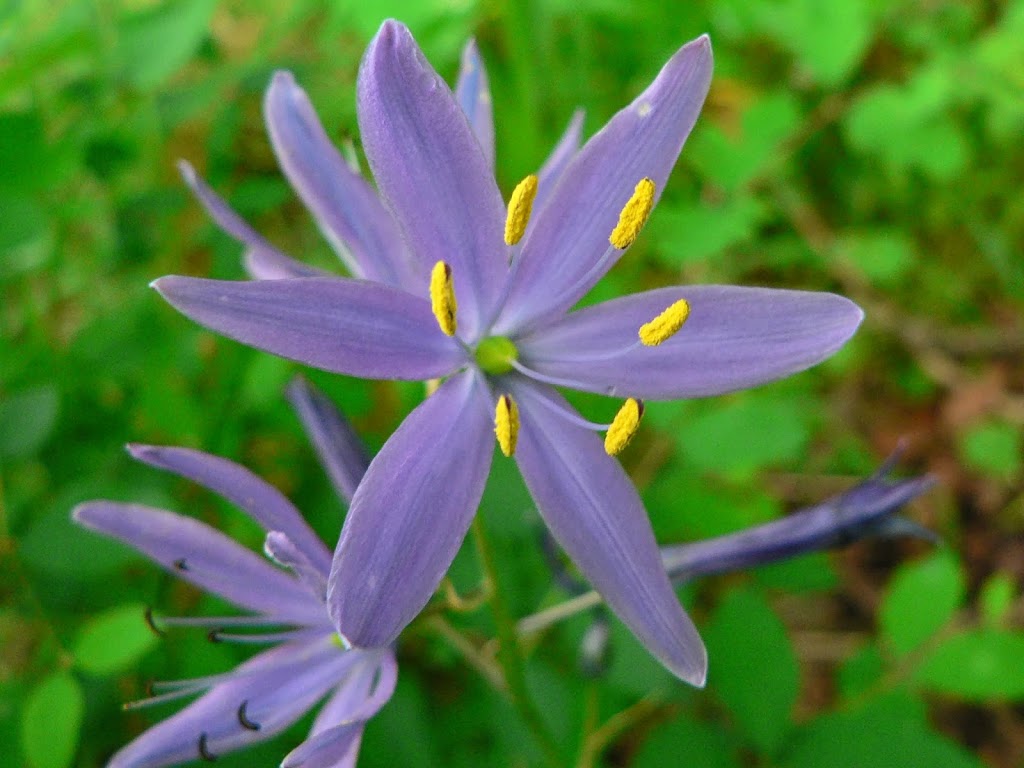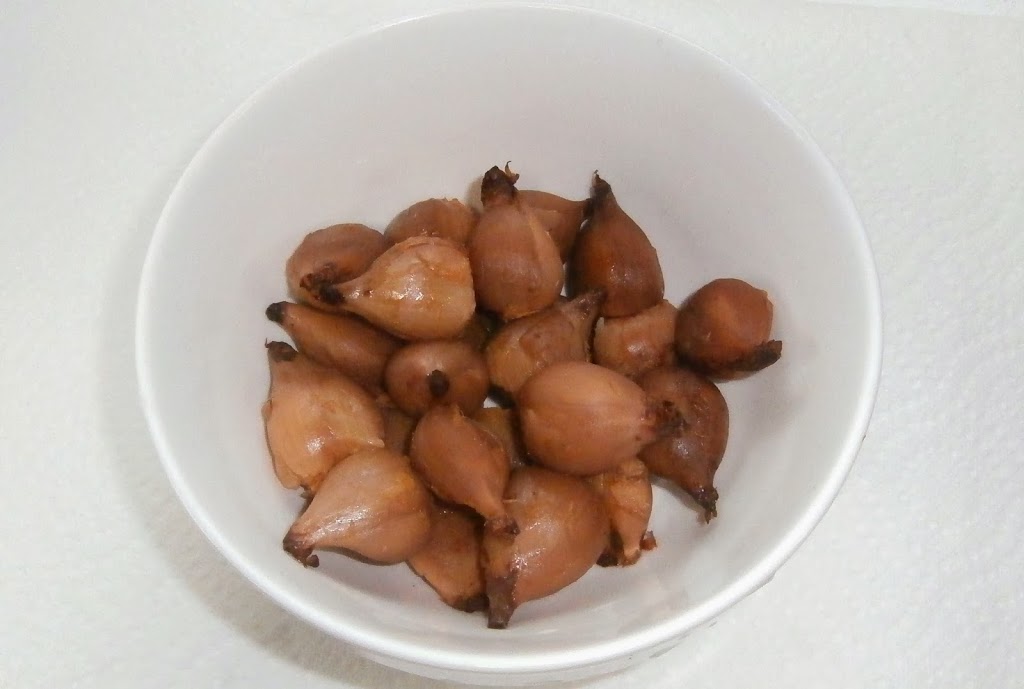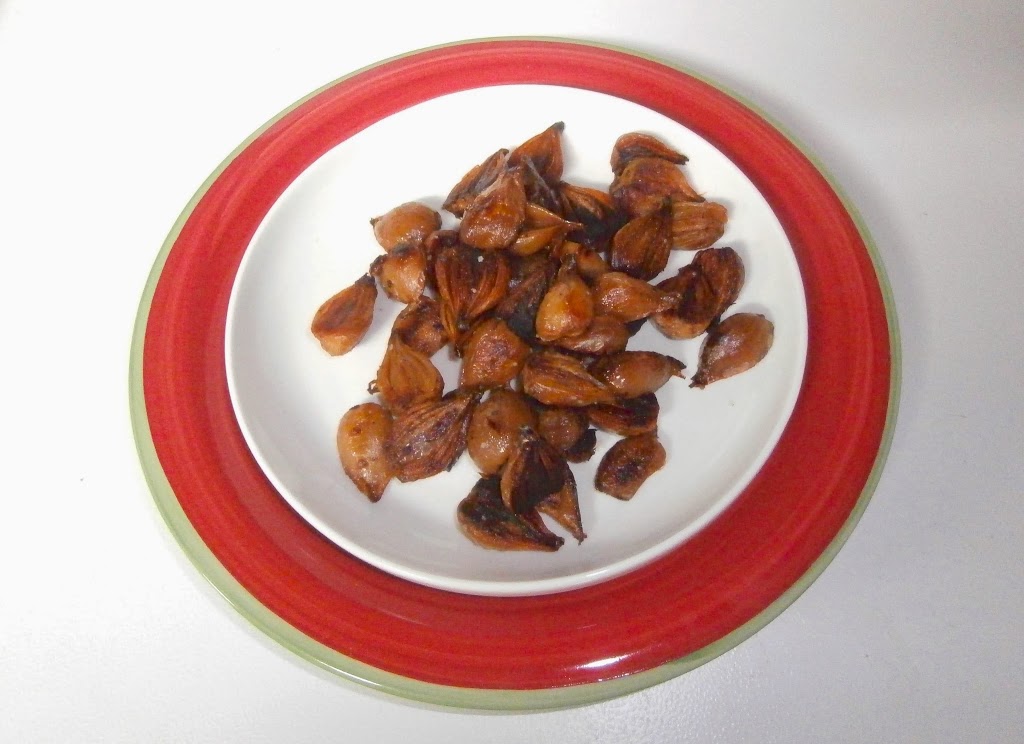Blog, camas (Camassia quamash), large camas (Camassia leichtlinii)
Camas: So, you’re into slow food?
 |
| Fresh camas bulbs (I know that they don’t look that appetizing, but the outer layer is easy to peel once they are steamed.) |
If you like your food not just slow, but really slow, you should look into camas (Camassia quamash is the most common variety, but there are also Camassia leichtlinii and others). Camas is a bulb-forming monocot native to the American west. Originally it was classified in the lilly family, but has since been reclassified into the asparagus family. By appearance, it has more in common with the former than the latter, but if outward appearance were important in taxonomy, humans would not be in the same phylum as the sea squirt.
Camas was a favored food of many native Americans and noted on a number of occasions by Lewis and Clark. It is one of few root vegetables that are native to this area that have any appeal outside of survival situations. It also makes a very nice blue flower, which is the main thing that it is known for. Many people grow camas as an ornamental and never think about eating it. What’s wrong with them?
Camas makes a bulb about 1-2 inches in diameter. Its larger cousin, the aptly named large camas, goes up to about 3 inches. Other than size, there is very little to distinguish the two from one another as foods. Both seed profusely, so once you have them growing, it is easy to let them drop their seeds for a continuing crop. You can also dig them up and separate the main bulb from its offsets in spring, although if I am going to go to the trouble of digging them up, I think that I’d prefer to eat them.
 |
| Camas flower ©2006 Walter Siegmund – Wikimedia Commons |
The problem with camas, and the reason for the title of this post, is that its primary carbohydrate is inulin, which we cannot digest directly. Instead, inulin is passed to the intestines where it is broken down by gut bacteria. This unexpected glut of food for the hungry tenants of your intestines can result in a great deal of gas, which is likely to be uncomforable for you and certain to be for anyone in proximity. And, of course, since you are not digesting the food, you are also not getting the full benefit of the energy that it contains.
Luckily for us, our native predecessors worked all of this out without the slightest bit of help from men in white coats. The trick to consuming camas without inulin gassification is to cook it for a long time in order to break down the inulin into its component fructose molecules. We can digest fructose and it is a lot sweeter than inulin, so this conversion not only makes camas safer for date night, but also makes it taste better.
So, what’s a long time? The long answer is: it depends. The short answer is: about a day, maybe two. See what I mean? That’s slow food. We’re talking slower than road-killed possum here. This is one reason why you can’t just head down to the grocery store to buy a sack of Camas bulbs.
 |
| Camas bulbs steamed for a day on the wood stove |
However, there is actually a large group of people for whom preparing camas should be quite easy. No, not people who are under house arrest. People who heat their homes with wood stoves, as we do, have the perfect set-up to cook camas. The ideal way to prepare camas is to steam it for about a day. All you need is a large pot with a lid placed on top of your wood stove with an inch or two of water in the bottom and a smaller pot or bowl placed inside containing the camas.
We just had our first all-day fire of the year and so prepared our first meal of camas. I just set up the pressure cooker (not to cook under pressure, but just because it is a nice big pot with a valve on top) with a small metal pot inside containing the camas bulbs and loosely fitted the lid. Then we let it steam for about a day. It is done when the bulbs turn brown, soft, and sticky. If the temperature is low, you might need to go up to two days. If you are in a hurry, some people report good results cooking in a pressure cooker at 10 pounds for about 8 hours. If you don’t have a wood stove, some people have reported good results doing the steaming in a slow-cooker.
 |
| Pan fried camas |
Once cooked, the bulbs are ready to eat. They are soft, with a texture like a carmelized onion or roasted garlic. The flavor is somewhere between potato and roasted chestnut. Of course, this doesn’t have to be the sole method of preparation. Once you have cooked them to the brown and soft stage, you can then use them as an ingredient in other recipes. They are nice cut into chunks and pan fried to add a bit of crispness. You can mash them with other root vegetables. You can even sweeten them as a dessert. Root vegetables are versatile, so I’m sure there are unlimited recipes that could use camas to good effect once it has been defused.
I’ll be doing some more work with camas to try to find superior eating qualities. Maybe the future will bring a fast-cooking camas. Just imagine the accolades that I will receive for breeding the 18 hour quick camas, a 25% improvement over the native product. I’ll be rich!

Thank you for sharing this. I had know idea how to eat these bulbs and I had wondered.
I saw a woman steaming the stalks like asparagus. .any ideas on preparing those???
In this post you speak about Native Americans in the past tense. Camas is still one of our favored foods we are still here and are striving toward our traditional diet that has sustained us since time immemorial.
Great! I think my idea there was that native Americans were using camas long before the rest of us got around to trying it. But your point is well taken.
But I thought camas are often called death camus because of its neurotoxin and can kill you if you eat 1-2% of your body weight! They are all over my property (Southwest TX), with larger bulbs than the ones I found in SE TX.
Camassia species are not toxic. There are a number of similar species known as death camas. You definitely want to make sure not to eat those.